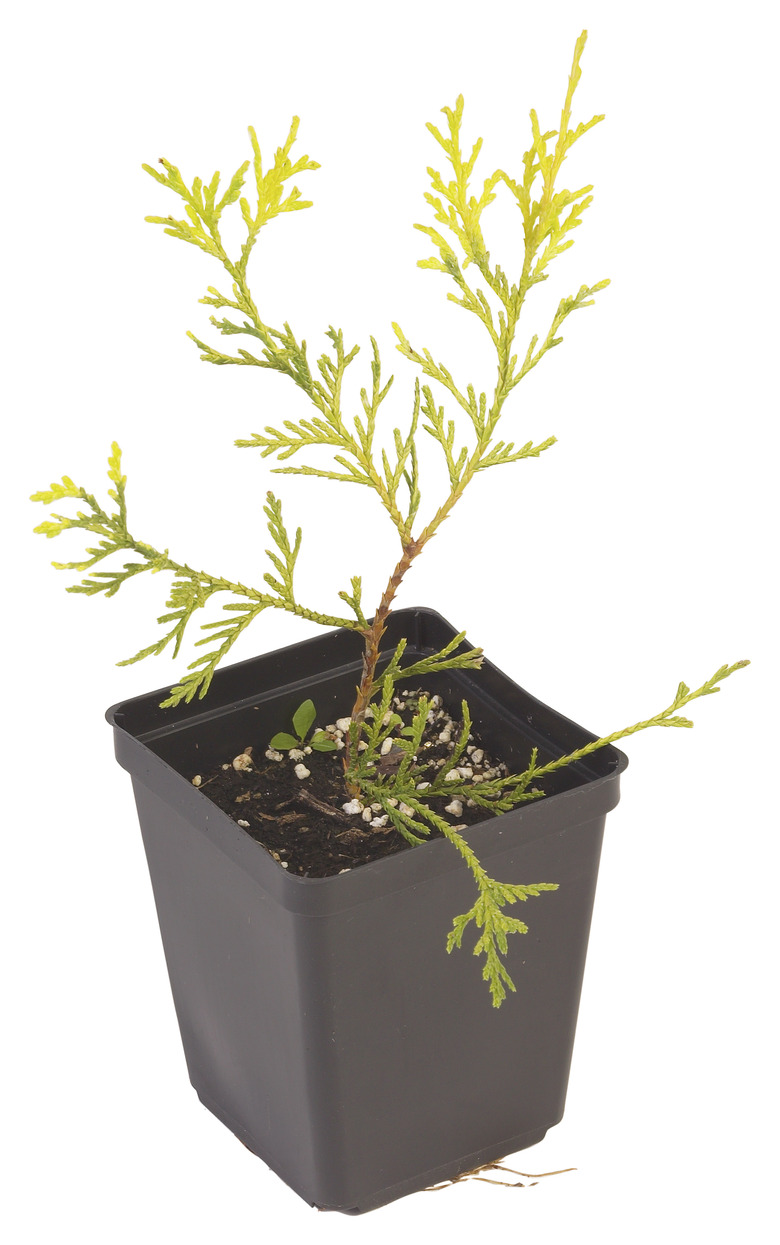The Use Of Ironite On Arborvitae
Prized for its flattened sprays of evergreen, needled foliage, arborvitae (Thuja spp.) grows around 20 to 40 feet tall, making it a good choice for smaller yards and container growing. American arborvitae ( Thuja occidentalis) is hardy in U.S. Department of Agriculture plant hardiness zones 2 through 7, and is considered invasive in some areas of the country. Japanese arborvitae (Thuja standishii) and Korean arborvitae (Thuja koraiensis), grow best in USDA zones 2 through 7 and USDA zones 5 through 7, respectively. When arborvitae loses its bright green color, Ironite brand supplement may solve the problem.
Prized for its flattened sprays of evergreen, needled foliage, arborvitae (Thuja spp.) grows around 20 to 40 feet tall, making it a good choice for smaller yards and container growing. American arborvitae ( Thuja occidentalis) is hardy in U.S. Department of Agriculture plant hardiness zones 2 through 7, and is considered invasive in some areas of the country. Japanese arborvitae (Thuja standishii) and Korean arborvitae (Thuja koraiensis), grow best in USDA zones 2 through 7 and USDA zones 5 through 7, respectively. When arborvitae loses its bright green color, Ironite brand supplement may solve the problem.
Iron Deficiency Symptoms
Iron helps plants produce chlorophyll, which is what makes the foliage green. Chlorophyll also helps the plant convert sunlight to food. When iron is lacking, a condition called iron chlorosis, the foliage fades and may turn pale green or yellow. The process may be caused by a high pH level, too much calcium in the soil or drainage problems. Soil that drains poorly can sap iron from the soil, and soil that drains too quickly can wash iron and other micronutrients away. New foliage may emerge undersized and yellow and can sometimes turn white, while leaf veins remain dark green. Leaves may turn brown, die at the tip or fall off the arborvitae.
- Prized for its flattened sprays of evergreen, needled foliage, arborvitae (Thuja spp.)
- American arborvitae ( Thuja occidentalis) is hardy in U.S. Department of Agriculture plant hardiness zones 2 through 7, and is considered invasive in some areas of the country.
Ironite Ingredients
Ironite comes in granular and ready-to-use liquid form, and each provides a different ratio of N-P-K, or nitrogen, phosphorus and potassium, in addition to iron. Ironite Plus granular has a ratio of 2-10-10, along with 2 percent iron. Ironite ready-to-use liquid has a ratio of 6-2-1 with 1 percent iron. Ironite original is a 1-0-1 fertilizer that includes nitrogen and potassium with no phosphorus and contains 4.5 percent iron.
Applying Ironite
Ironite Liquid RTU should be shaken before attaching it to the garden hose nozzle. Make sure the sprayer is set to the "Off" position before turning on the water. Go to the farthest arborvitae and turn on the sprayer. Spray the foliage evenly, swinging the sprayer from side to side while walking around each arborvitae that needs treatment. This product may also be sprayed directly on moist soil around the base of the plants. Granular Ironite should be spread by hand or with a spreader at the rate of 1.5 cups of fertilizer per 100 square feet of area around the arborvitae. Spread the product evenly around the base of the arborvitae to cover the soil out to the drip line. Water thoroughly so the fertilizer will penetrate the soil to the roots. Apply 1/2 tablespoon of granular Ironite around the soil in container-grown arborvitae if the pot is 12 inches in diameter. For each additional 1 inch of pot diameter, add another 1/2 tablespoon of Ironite. Water well after application.
- Ironite comes in granular and ready-to-use liquid form, and each provides a different ratio of N-P-K, or nitrogen, phosphorus and potassium, in addition to iron.
- Granular Ironite should be spread by hand or with a spreader at the rate of 1.5 cups of fertilizer per 100 square feet of area around the arborvitae.
Tips and Cautions
Read the label carefully to adjust for your specific conditions. To keep Ironite from drifting to other plants, wait for a windless day to apply the fertilizer. Keep children and pets out of the treated area until the foliage dries, if using liquid spray, or until the product is watered in by irrigation or rainfall and the soil dries.
References
- Missouri Botanical Garden: Thuja Occidentalis — American Arborvitae
- Purdue University Extension: Landscaping for Homeowners — Fertilizing Trees and Shrubs
- National Gardening Association: Take Care of the Arborvitae
- Missouri Botanical Garden: Thuja Standishii — Japanese Arborvitae
- Missouri Botanical Garden: Thuja Koraiensis — Korean Arborvitae
